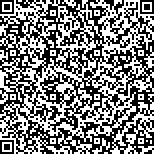| 引用本文: | 郭匿春,马友华,李堃,胡菊香,张震,何金铃.东巢湖湖滨农田生态拦截沟中浮游植物群落结构.湖泊科学,2014,26(2):277-287. DOI:10.18307/2014.0215 |
| GUO Nichun,MA Youhua,LI Kun,HU Juxiang,ZHANG Zhen,HE Jinling.Phytoplankton community in the ecological interception ditch approach to the eastern Lake Chaohu. J. Lake Sci.2014,26(2):277-287. DOI:10.18307/2014.0215 |
|
| 本文已被:浏览 8759次 下载 4790次 |

码上扫一扫! |
|
|
| 东巢湖湖滨农田生态拦截沟中浮游植物群落结构 |
|
郭匿春1, 马友华1, 李堃2, 胡菊香3, 张震1, 何金铃4
|
|
1.安徽农业大学资源与环境学院, 合肥 230036;2.安徽省环境科学研究院安徽省污水处理技术研究重点实验室, 合肥 230061;3.水利部中国科学院水工程生态研究所水生生物学研究室, 武汉 430079;4.安徽农业大学生命科学学院, 合肥 230036
|
|
| 摘要: |
| 在巢湖市烔炀镇西宋村农田示范基地中建立生态拦截沟来处理农业生产排放的农业面源污水,就生态拦截沟中浮游植物丰度、生物量和群落结构进行了研究.实验历时6个月,研究中共检测到浮游植物9门48属75种.研究发现尽管农田生态拦截沟中的水生植被能有效削减水体中的氮、磷营养盐,但对浮游植物群落结构产生的影响不大.生态拦截沟中主要藻类为绿藻、蓝藻和硅藻,且出水口蓝藻所占比例较进水口有显著上升.生态拦截前后浮游植物优势种类的变化不大,主要为蓝藻门的铜绿微囊藻(Microcystis aeruginosa)、绿藻门的微球衣藻(Chlamydomonas microsphaera)和硅藻门的孟氏小环藻(Cyclotell meneghiniana)等.藻类生物多样性研究表明生态拦截沟中的水体主要为清洁或寡污型水体,仅在夏季的7月份出现了轻微的水体污染.典型对应分析发现,TN/TP对浮游植物种类分布的解释度最高.同时,发现水体总磷的对数、总溶解磷的对数与藻类的生物量呈正比,而TN/TP与藻类的生物量呈反比.研究表明农田生态拦截沟尽管具有削减农业氮、磷营养盐面源污染的作用,但不能有效地降低水体中蓝藻的生物量.农业面源污水中的藻类营养盐限制主要为磷限制,削减农田径流中的磷含量是控制巢湖流域水体富营养化和遏制蓝藻水华的关键环节. |
| 关键词: 生态拦截沟 营养盐 浮游植物 藻类多样性指数 典范对应分析 巢湖 |
| DOI:10.18307/2014.0215 |
| 分类号: |
| 基金项目:国家自然科学基金项目(31300395);农业部农业生态环境保护项目(2110402-1177);公益性行业(农业)科研专项项目(201003014)联合资助 |
|
| Phytoplankton community in the ecological interception ditch approach to the eastern Lake Chaohu |
|
GUO Nichun1, MA Youhua1, LI Kun2, HU Juxiang3, ZHANG Zhen1, HE Jinling4
|
|
1.Resources and Environment College, Anhui Agricultural University, Hefei 230036, P. R. China;2.Provincial Key Laboratory of Research on Wastewater Treatment Technology, Anhui Academy of Environmental Science Research, Hefei 230061, P. R. China;3.Institute of Hydroecology, Ministry of Water Resources and Chinese Academy of Sciences, Wuhan 430079, P. R. China;4.School of Life Siences, Anhui Agricultural University, Hefei 230036, P. R. China
|
| Abstract: |
| The phytoplankton community in the ecological interception ditch of the farm demonstration base approach to the eastern Lake Chaohu were analyzed in a six months-experiments. About 75 species of phytoplankton were identified. The ecological interception ditch reduced the runoff of nitrogen and phosphorus significantly, but it didn't change the phytoplankton community. Chlorophytes, Cyanophytes and Bacillariophytes were dominant in the ecological interception ditch. The proportion of Cyanophytes in phytoplankton community increased in the outlet contrast with the inlet. Microcystis aeruginosa, Chlamydomonas microsphaera and Cyclotell meneghiniana were main species in the ecological interception ditch. There are significant relationships between the biomass of phytoplankton and lg TDP, lg TP and TN/TP. The Simpson's diversity index of phytoplankton suggested the water quality of the ecological interception ditch was clean, only little polluted in July. Canonical corespondence analysis(CCA) exhibited the distribution of phytoplankton was mainly affected by TN/TP. Our results suggested macrophytes in ecological interception ditch reduce the runoff of nitrogen and phosphorus, while didn't prevent the dominance of Cyanobacteria. The P-limitation of phytoplankton was the main factor affecting the growth of algae, a reduction of phosphorus would result in the control of algae and the cleanup of water quality. |
| Key words: Ecological interception ditch nutrients phytoplankton simpson's diversity index CCA Lake Chaohu |